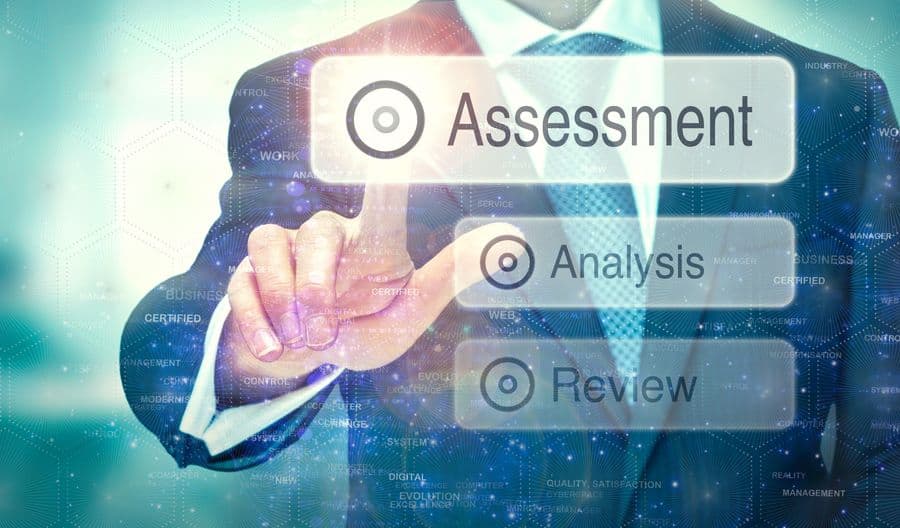4 Tips For Better IT Risk Assessment And Analysis

Risk assessment and analysis have always been a massive part of a system’s security.
It allows you to identify risks and prepare countermeasures to either minimize their possibility or potential damage.
This process is particularly crucial in information technology (IT), especially now that cyberattacks have become more common among businesses than ever.
Unfortunately, due to the ever-growing world of technology, cybercriminals have become a lot harder to deal with as they get their hands on potentially destructive technology.
Simply put, existing IT risk assessment and analysis frameworks would eventually become obsolete in the face of new and improved cyberattack techniques unless, of course, you step up your cyber security game and develop a better strategy. With that said, here are a few tips to help you improve your IT risk assessment and analysis.
Know Your Priorities
An IT system would always consist of numerous vulnerabilities. Examples include poor network connection, missing data encryption, and SQL injection. Your job is obviously to eliminate these vulnerabilities, and if that’s not possible, you can at least monitor them.
However, no matter how big an organization you have, you can’t deal with all vulnerability types. Even corporate giants such as Google and Apple have suffered from cyberattacks before, and it’s not because they were careless. Covering all sides is simply not possible. Your best bet is to prioritize on vulnerabilities that matter most, but if there are countless vulnerabilities, how will you know which to prioritize?
There are several approaches to this. One, you can focus on vulnerabilities that affect the most critical assets. Two, you can prioritize vulnerabilities that are most likely to result in an attack. Three, you can monitor closely the vulnerabilities that you think would lead to the most damage. But remember, you can’t do this if you’ve no way of identifying the existing vulnerabilities in your system, and that’s why you’ll need tools.
Utilize Vulnerability Identification Tools
A vulnerability is any weakness that enables a person with malicious intent to threaten an organization. While a company usually consists of countless vulnerabilities, you can easily detect and identify these vulnerabilities through several methods. These may include:
- Checking the NIST vulnerability database
- Vendor data
- Information security test and evaluation procedures
- Vulnerability scanning tools
- Audit reports
- Penetration testing
You can make use of a few of these, or you can go all out and invest in all kinds of tools. Either way, it’s up to you which method you’d use to identify vulnerabilities.
Recognize Human Vulnerabilities
Just because you’re dealing with information technology doesn’t mean vulnerabilities that affect the system would only exist within the system. Some vulnerabilities tend to exist in the physical realm, so to speak, and one example of this would be human error.
Human error is basically when one of your employees or someone with access to your system makes a mistake, a mistake that would end up paving the way for data breaches. Believe it or not, this type of vulnerability is the leading cause of cyberattacks among corporate giants. So, it would be in your best interest if you recognize the possible risks human vulnerabilities can bring to your business and act on them accordingly.
Consider Other Threats Apart from Cyberattacks
While cyberattacks are the main reason for data loss, identity theft, and viruses, it’s not the only threats that can affect your IT system. There are other threats, such as:
- Natural disasters: Earthquakes, hurricanes, and floods all have the potential to damage your system. It can lead to data loss and the destruction of your servers.
- Hardware failure: Old machines will eventually suffer from hardware failure, which may result in data loss and other damage affecting the IT system.
Unlike cyber attacks, preparing for these threats are much simpler. For instance, you can avoid setting your main server in a high-risk area. As for hardware failure, you can use cloud storage for your data. Simply put, just like how you protect against cyberattacks, you should also recognize other threats to your information technology system.
Final Words
IT risk assessment and analysis is undoubtedly one of the most demanding tasks within the company. You have to constantly monitor vulnerabilities, develop strategies, and more.
However, as you and your team gain experience over time, you’ll no longer have to worry about this task as much as you would have at the beginning. The more IT risks you encounter, the better you get at dealing with them. And while you may get stuck at times, you can always count on your past records to help you out. On that note, you might want to consider documenting the process and its results just so you can use them as a reference in the future.





